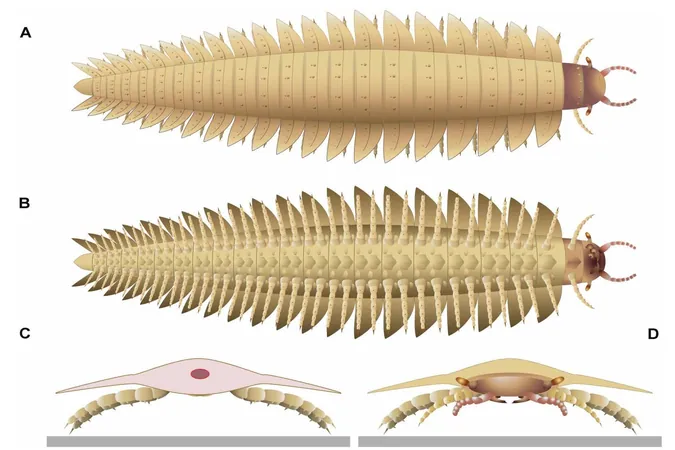
Scientists Unravel the Horrifying Appearance of a Car-Sized Millipede from Prehistoric Times
2024-10-10
Author: Ken Lee
Introduction
Long before the age of dinosaurs, a truly monstrous creature prowled the Earth—a millipede-like arthropod that could terrify even the fiercest T. rex fan. Imagine an enormous, wriggling mass that weighs over 100 pounds (45 kilograms) and stretches the length of an average car. Meet Arthropleura, the largest known arthropod to have ever existed.
The Existence of Arthropleura
Arthropleura roamed the planet roughly 346 million years ago but became extinct around 50 million years later, sparing humanity from encountering these monstrous beings. However, their impressive size left behind intriguing questions for modern paleobiologists to explore: How are they related to today's smaller millipedes and centipedes?
Scientific Challenges in Understanding Arthropleura
Though classified as myriapods—an ancient group of arthropods that includes modern millipedes—determining Arthropleura's exact lineage has been a significant scientific challenge. Researchers from several French universities have recently made groundbreaking strides to shed light on this enigma by analyzing fossils of the ancient giant.
The Importance of Fossil Discoveries
Despite being discovered in 1854, most of the fossils unearthed have been fragmentary, with no complete head specimen available. This lack of evidence led some scientists to mistakenly identify parts of the creature as its head, compounding the mystery surrounding its anatomy. Until now, researchers had been unable to ascertain the look of Arthropleura’s eyes, antennae, and mouth.
Groundbreaking Research Findings
Under the leadership of Mickaël Lhéritier from Claude Bernard University, scientists utilized advanced tomographic imaging techniques to examine exceptionally well-preserved juvenile fossils. The findings, published in the journal Science Advances, reveal that Arthropleura did share some facial traits with its modern relatives, millipedes and centipedes.
Anatomical Features Uncovered
The advanced scans uncovered that Arthropleura boasted seven-segmented antennae and a distinct collum, similar to today's millipedes. Fascinatingly, it also displayed features akin to centipedes, including fully enclosed mandibles and specialized jaw structures known as maxillae. This research indicates a closer evolutionary bond between millipedes and centipedes than previously thought, which is a point of contention among myriapod aficionados.
Behavioral Implications
The study also provides insights into the behavior of these ancient arthropods. Researchers speculate that Arthropleura may have been scavengers, consuming decomposing organic matter, although definitive proof remains elusive. James Lamsdell, a paleobiology expert at West Virginia University, highlighted that without definitive analysis of the animal’s digestive system, the specifics of its diet and respiration are still largely unknown. There's even a possibility that Arthropleura was semi-aquatic, exploring multiple habitats throughout its life cycle.
Conclusion
With a clearer picture of Arthropleura's imposing appearance, it's frightening to think that these elongated creatures—comparable in size to alligators—once roamed both land and possibly water in search of their next meal. It's a humbling reminder; the next time you spot a millipede scuttling across your floor, take a moment to appreciate its tiny stature compared to its ancient ancestors before deciding to squish it!



 Brasil (PT)
Brasil (PT)
 Canada (EN)
Canada (EN)
 Chile (ES)
Chile (ES)
 España (ES)
España (ES)
 France (FR)
France (FR)
 Hong Kong (EN)
Hong Kong (EN)
 Italia (IT)
Italia (IT)
 日本 (JA)
日本 (JA)
 Magyarország (HU)
Magyarország (HU)
 Norge (NO)
Norge (NO)
 Polska (PL)
Polska (PL)
 Schweiz (DE)
Schweiz (DE)
 Singapore (EN)
Singapore (EN)
 Sverige (SV)
Sverige (SV)
 Suomi (FI)
Suomi (FI)
 Türkiye (TR)
Türkiye (TR)